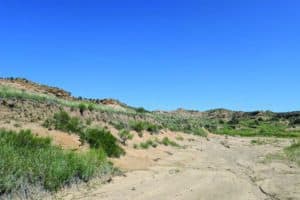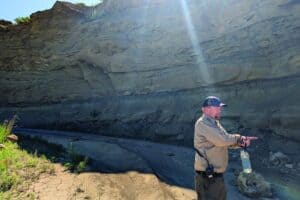Coben Scott is a history graduate, a history buff, and he has explored and researched much of Falcon and the area’s past. Coben’s column, Yesteryear, features stories about the history of the plains.
Frontier Medicine
Coben Scott
While today there is a good general concept of medicine, health care and hygiene, just over a hundred years ago, it was a different scene. Today, doctors and health professionals have to go to medical school but when Falcon was founded in 1888, educated doctors were scarce.
Colorado Springs, (Old) Colorado City and Manitou Springs were rare cases where there were town doctors and professionals to care for the sick. Most notable were Dr. Blunt of Colorado City and Dr. Bell of Manitou. Blunt was an early town resident and also ran a successful mortuary. Bell was the founder of Manitou. Colorado Springs became a hub of health and largely grew for those seeking a hopeful cure/recovery to the nation’s sweeping tuberculosis spike. Many would flock to these three towns hoping that the high elevation and mountain waters would be a cure for the respiratory illness. A popular theory was that dryness would kill the bacteria; and, with an excess amount of sunshine and pollution free air, Colorado was the spot.
The Springs would dawn the slogan, “City of Sunshine,” momentarily to draw in sick crowds. Many sanitariums would open in the area, places specifically for treating people with tuberculosis, most notably the Union Printer Home.
Although today these places are roughly a 30-minute drive from Falcon, in those days it took much longer. Leaving Falcon was somewhat far from these professionals, nearly an hour on horseback. A train ride would be faster, but would also ring up a pretty penny. Because of this distance, Falcon could only access what was available for medical care. Despite having six saloons, a hospital was nowhere to be found.
Most likely, there would be a man who knew more than most about the immune system — he would be both the town’s “doctor” and veterinarian. To throw more salt in the inappropriately treated wound, concepts of how to handle most problems were not great. Germ theory had just begun to be accepted after breakthroughs in England and the death of President Garfield, and it took time to reach the West. The thought of sanitizing medical tools rarely crossed the mind of frontier doctors and cross-contamination was a problem, especially when the doctor was also the veterinarian.
One great example of a frontier doctor is from my ancestry. Hiram Maxwell, my great-great-great grandfather, was a doctor without a degree, working on both people and animals when needed on the high plains. According to one story, a man had an accident with a horse that gouged out a hole in his shoulder. Hiram’s solution was to stick an ear of corn in the hole to stop the bleeding momentarily before getting string and a sewing needle to stitch up the gash; he then sent the man on his way. Frontier health work wasn’t always just a spur of the moment solution like an ear of corn and a string; if a “doctor” was lucky, he would get his hands on a proper medical book. As mentioned, the accepted practices and theories of how the human body worked were far different from what it is now.
Another example from Hiram’s medical practice is from one of his personal medical books. For the treatment of spider bites, the passage states, “If cocaine can be obtained quickly, it is valuable in neutralizing the poison and relieving pain … . Wet earth is also a good application for insect stings and spider bites.” So seeing the town doctor after getting a sting could have resulted in a shot of cocaine and a nice glob of mud. In just 136 years, health care practices have drastically improved, both in credentials and practice.





